
Extra Questions, Notes, Assignment and study material for Class 10th as Per Latest CBSE Syllabus
Chapter- 4 English Language and Literature- First Flight (Latest 2023-24)
How to Tell Wild Animals Extra Question Answer English
By– Carolyn Wells
About the Poetess – Carolyn Wells
Carolyn Wells – A Short Biography
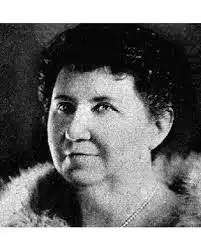
Carolyn Wells was an American poet. She was born in Rahway, New Jersey, in the United States of America on 18 June 1862, to Anna Wells and William Wells. She was married to Hadwin Houghton. After finishing her school, she worked as a librarian for the Rahway Library Association. Her first book was published in 1896.
Introduction of the lesson- How to Tell Wild Animals
Following is the introduction English text for Chapter ‘ How to Tell Wild Animals Class 10,’ aimed to give you a clear grasp of its main ideas.”
This humorous poem suggests some dangerous ways to identify wild animals. The poet gives a beautiful description of the Asian Lion and the Bengal Tiger. Then he points out about the Leopard and the Bear. He describes the Hyena for its smiling face and the crocodile for its tears. Then the poet describes how the Chameleon changes its colour.
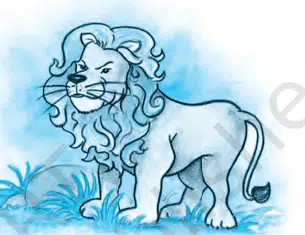
(यह हास्यप्रद कविता जंगली जानवरों की पहचान करने के बारे में और कुछ खतरनाक तरीकों का वर्णन करती है ।कविएशियाई शेर और बंगाल के बाघ का बड़ा सुंदर वर्णन करता है । तब वह चीते और भालू की पहचान के बारे में बताता है ।वह लकड़बग्घे का वर्णन उसके मुस्कुराते हुए चेहरे से और मगरमच्छ का वर्णन उसके आंसुओं से करता है।तब कवि इस बात का भी वर्णन करता है कि गिरगिट अपना रंग कैसे बदलता है।)
Plot/ Theme / Central Idea of the Lesson/ Literary Analysis of How to Tell Wild Animals/ Main Idea
Central Idea of the Poem
The poet, Carolyn Wells, treats even ferocious animals and beasts with a coat of gentle but weird humour. If you see a huge terrible beast coming to you in the eastern forests and if you are dying when he roars, then know it is an Asian Lion. The humour is created by various beasts of prey differently.

The Bengal tiger is noble but ‘eats you’ the moment he notices you. The leopard with peppered spots will only ‘lep and lep again’. The seemingly friendly hug leads to fatal results. The crocodile’s weeping and hyena’s merry but weird smile deceive their victims.
Style
The style of the poem is humorous. This humorous poem suggests some ‘dangerous ways’ to identify wild animals. The use of words and emotions are not only humorous but ironical as well. It is ironical that the ‘noble’ Bengal Tiger eats you the moment he sees you. It does no good to roar with pain when you are in front of the spotted leopard. The friendly hug of the bear is deadly. The weird but merry smile of hyenas and weeping of crocodiles trap their victims to death. The rhyme scheme of the stanzas is: ab, ab, cc
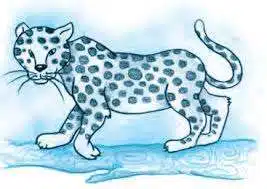
The poet takes liberties with the language to create the desired poetic effect. For example, the words Lepe and `lep’ in the third stanza are deliberately not spelt correctly to create the rhyming effect.
Summary in English- How to Tell Wild Animals
Take a look at the following summary example to better understand the chapter ” How to Tell Wild Animals, “Crafted through careful summary writing.
‘How to Tell Wild Animals’ is a beautiful poem by Carolyn Wells about the strange habits and behaviours of some wild animals. The poet says that the Asian lion is a large tawny beast with a fearful roar. A tiger has black stripes on his yellow skin and is always ready to eat his victim. A leopard has black spots on his skin. He leaps on his prey and eats it up. A bear can come to human colonies. He hugs up against a person and can put to death. A crocodile always sheds tears while eating its victim. A hyena always looks smiling. A chameleon always changes its colour according to its surrounding. This is the strange world of some of the wild animals-
Detailed Summary (2)
1. If you go by the chance to the jungles of the countries lying in the east, you will see a grand and majestic wild beast. If in those thick forests if you see a large and terrible animal with dark yellowish skin, you should be sure that he is the Asiatic lion. And if he roars loudly and the roar terrifies you to death, then you are hearing the roar of an Asiatic lion.
2. If you are roaming around in the forest and you see a noble beast, you must understand that you are face to face with the Bengal Tiger. This noble beast has black stripes over his yellowish hide. He is so quick that the moment you notice him, he will eat you at once. This is the simple rule of distinguishing the Bengal Tiger.
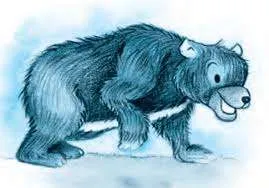
3. If you are walking leisurely in the forest and view a beast, it might be a leopard. His hide is covered with dark spots. The moment he sees his prey, he pounces upon it. His attack is sudden. There is no escape from him even if you cry with pain. He will continue jumping at you and start eating you before you understand that he is a leopard.
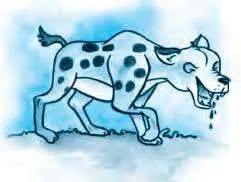
4. If you are walking around your yard, you may meet a creature there. The moment he sees you, he hugs you very hard. If he does it so, you must be sure that you are hugged by a bear. If you have any doubt in your mind, then he will just give you another tight hug. This hug may seem friendly but it can be fatal.

5. It is not an easy job for an inexperienced person to distinguish beasts of prey. He will be confused in distinguishing them. He may not be able to distinguish between a hyena and a crocodile. Hyenas are very deceptive. They will attack their victims with weird smiles and kill. them. Crocodiles pretend to be weeping before attacking and killing their victims.

6. A true chameleon is a small animal. It looks like a lizard. It has no ears at all. It doesn’t have a single wing either. If you see only this creature on the tree and not any other thing, you must be sure that you are seeing a chameleon.
Main Points of the Poem
- The Asiatic lion is a grand and majestic wild beast.
- It is found in the jungles of the eastern countries of Asia.
- It is a huge yellowish coloured beast.
- It roars terribly loud and its loud roar can terrify you to death.
- If you meet such a ferocious and powerful animal, you must be sure that he is the Asian Lion.
- The Bengal Tiger is a noble wild beast.
- The tiger has black stripes all over his yellowish hide.
- The moment you see him, he will not spare but eat you at once.
- When you are strolling forth a forest, you can find a beast.
- He is the leopard.
- His hide is peppered with spots.
- There is no escape from him even if you cry in pain.
- He will continue pouncing on you and eat you to death.
- If you are walking in your yard, you can be face to face with a bear.
- The bear hugs you very hard.
- His hug is not friendly.
- He may press you so hard that his hug may bring your death.
- An inexperienced person can’t distinguish beasts of prey.
- the lie will not be able to distinguish a hyena from a crocodile.
- Hyenas and crocodiles have very deceptive appearances.
- Hyenas smile merrily before attacking and killing their victims.
- Crocodiles pretend to be weeping before pouncing upon their prey and killing them.
- A true Chameleon is a small animal like a lizard.
- He has no ears at all.
- Neither has he a single wing.
- If you see such a creature on a tree, then you are seeing a chameleon.
DETAILED SUMMARY in Hindi – How to Tell Wild Animals
Here is the Hindi story summary of the chapter How to Tell Wild Animals Class 10,” designed to give you a clear understanding of its essential ideas in Hindi.
‘How to Tell Wild Animals’ कैरोलिन वैल्ज़ द्वारा कुछ जंगली जीवों की विचित्र आदतों और व्यवहारोंके बारे में लिखी गई एक सुंदर कविता है ।कवि कहता है कि इस एशियाई शेर भूरे –पीले रंग का एक डरावनी गर्दन वाला विशालकाय पशु होता है। बाघकी पीली खाल पर काली धारियाँ होती हैं और वह अपने शिकार को खाने के लिए हर समय तैयार होता है ।चीते के शरीर पर काले धब्बे होते हैं ।वह अपने शिकार के ऊपर कूदता है और उसे खा जाता है ।भालू मानवीय बस्तियों में भी आ जाता है ।वह किसी व्यक्ति को आलिंगन करता है और उसे मार देता है ।मगरमच्छ अपने शिकार को खाते समय हमेशा आँसू बहाता है । लक्कड़बग्घाहमेशा मुस्कुराता हुआ-सा प्रतीत होता है। गिरगिट अपने आस-पास के वातावरण के अनुसार अपना रंग बदल लेता है।यह कुछ जंगली जानवरों की विचित्र दुनिया है।
MULTIPLE CHOICE QUESTIONS/ Quiz- How to Tell Wild Animals
1.Where do we see the Asian lions?
(A) western countries (B) eastern countries
(C) southern countries (D) all of the above
Ans. (B) eastern countries
2. What is the colour of the Asian Lions?
(A) brownish-yellow (B) yellow
(C) black (D) red
Ans. (A) brownish-yellow
3. To which animal does the poet call noble?
(A) crocodile (B) bear
(C) tiger (D) lion
Ans. (C) tiger
4. Which animal has black stripes on his body?
(A) lions (B) hyena
(C) bear (D) tiger
Ans. (D) tiger
5. Which animal has black spots on his hide?
(A) leopard (B) tiger
(C) lion (D) bear
Ans. (A) leopard
6. Which animal is mainly associated with Bengal?
(A) lion (B) tiger
(C) hyena (D) crocodile
Ans. (B) tiger
7. Which animal gives you an embrace?
(A) hyena (B) bear
(C) crocodile (D) leopard
Ans. (B) bear
8. The face of which animal appears smiling?
(A) hyena (B) bear
(C) crocodile (D) leopard
Ans. (B) bear
9. The face of which animal appears smiling?
(A) hyena (B) bear
(C) crocodile (D) leopard
Ans. (A) hyena
10. Which animal sheds tears while eating its victim?
(A) lion (B) tiger
(C) crocodile (D) chameleon
Ans. (C) crocodile
11. Which of the following animals lives, on a tree?
(A) hyena (B) bear
(C) crocodile (D) chameleon
Ans. (D) chameleon
12. Which animal changes its colour according to its surrounding?
(A) hyena (B) chameleon
(C) lizard (D) all of the above
Ans. (B) chameleon
COMPREHENSION OF STANZAS
Read the following stanzas and answer the questions that follow :
STANZA 1
If ever you should go by chance
To jungles in the east ;
And if there should to you advance
A large and tawny beast.
If he roars at you as you’re dyin’
You’ll know it is the Asian Lion…
Questions :
(a) Where should you go by chance?
(b) How does the described animal look?
(c) How will you know that it is an Asian lion
(d) What do you mean by ‘the east’?
(e) Name the poem and the poet.
Answers :
(a) You should go to jungles in the east.
(b) The described animal looks large and yellow-coloured.
(c) I will roar at you when you are dying with fear.
(d) ‘The cast’ means the countries in the eastern part of the world.
(e) Poem: How to Tell Wild Animals.
Poet: Carolyn Wells.
STANZA 2
Or if sometimes when roaming around,
A noble wild beast greets you,
With black stripes on a yellow ground,
Just notice if he eats you.
This simple rule may help you learn
The Bengal Tiger to discern.
Questions :
(a) Who is the noble wild beast?
(b) Describe its appearance.
(c) Where will you encounter the Bengal Tiger?
(d) What are the rhyming words in this stanza?
(e) Name the poem and the poet.
Answers :
(a) The noble wild beast is the Bengal Tiger.
(b) He has black stripes on a yellow background.
(c) You will encounter him while roaming in the jungle.
(d) The rhyming words are :
round – ground
you-you
learn – discern
(e) Poem: How to Tell Wild Animals.
Poet: Carolyn Wells.
STANZA 3
If strolling forth, a beast you view,
Whose hide with spots is peppered,
As soon as he has lept on you,
You’ll know it is the Leopard.
‘Twill do no good to roar with pain,
He’ll only lep and lep again.
Questions :
(a) How is the leopard’s skin?
(b) How does a leopard behave when he meets a person?
(c) Will roar with pain help a person when the leopard has attacked him?
(d) Which are the rhyming words in this stanza?
(e) Name the poem and the poet.
Answers :
(a) The leopard has spots on his skin.
(b) When he meets a person he leaps on him at once.
(c) No. it will not help him. The leopard will only eat him up.
(d) Thy rhyming words in this stanza are :
view – you
Peppered- Leopard
pain – again
(e) Poem: How to Tell Wild Animals.
Poet: Carolyn Wells.
STANZA 4
If when you’re walking around your yard
You meet a creature there,
Who hugs you very, very hard,
Be sure it is a Bear.
Questions :
(a) From which poem have these lines been taken?
(b) Where can you meet the bear?
(c) What does the bear do on meeting a person?
(d) What is the rhyming scheme of this stanza?
(e) Who is the poet of this poem?
Answers :
(a) These lines have been taken from the poem ‘How to Tell Wild Animals’.
(b) We can meet around our yard.
(c) The bear hugs the person very hard when he meets one.
(d) The rhyme scheme of this stanza is `abab’.
(e) The poet of this poem is Carolyn Wells.
STANZA 5
If you have any doubts, I guess
He’ll give you just one more caress.
Though to distinguish beasts of prey
A novice might nonplus,
Questions :
(a) From which poem have these lines been taken?
(b) Who is ‘he’ in the second line?
(c) How will ‘he’ react to the human being?
(d) About what may we have a doubt?
(e) What can nonplus a victim?
Answers :
(a) These lines have been taken from the How to Tell Wild Animals’.
(b) Here ‘he’ is a bear.
(c) ‘He’ will embrace tightly the human being.
(d) We may have doubt about the strength of a bear.
(e) Distinguishing beasts of prey can nonplus a victim.
STANZA 6
The Crocodile you always may
Tell from the Hyena thus :
Hyenas come with merry smiles ;
But if they weep they’re Crocodiles.
Questions :
(a) From which poem have these lines been taken?
(b) Hoi do the hyenas come?
(c) What is so distinct about crocodiles?
(d) How can you differentiate a crocodile from a hyena?
(e) Select the rhyming words in this stanza.
Answers::
(a) These lines have been taken from the poem ‘How to Tell Wild Animals’.
(b) The hyenas come with merry smiles.
(c) Crocodiles are distinct from their weeping.
(d) A crocodile is always weeping while a hyena looks always smiling.
(e) The rhyming words are: smiles-crocodiles
STANZA 7
The true Chameleon is small,
A lizard sort of thing ;
He hasn’t any ears at all,
And not a single wing.
If there is nothing on the tree,
‘Tis the chameleon you see.
Questions :
(a) How does a chameleon look?
(b) What two things does a chameleon not have?
(c) Where is the chameleon generally found?
(d) Why can’t we see the chameleon on the trees?
(e) Name the poem and the poet.
Answers :
(a) A chameleon looks like a lizard.
(b) A chameleon does not have ears and wings.
(c) It is generally found on trees.
(d) We can’t see a chameleon on the trees because it can change its body colour
according to its surrounding.
(e) Poem: How to Tell Wild Animals.
Poet: Carolyn Wells.
Stanza-8: (Page 43)
Or if sometimes when roaming around,
A noble wild beast greets you,
With black stripes on a yellow ground,
Just notice if he eats you.
This simple rule may help you learn
The Bengal Tiger to discern.
Word-Meaning: Roaming round- wandering, Noble— (here) grand, impressive, Wild— not domestic, Beast – wild animal, Greets – welcomes, Stripes- lines, Node— to see validly, Discern— recognise,
Paraphrase
If by chance you are roaming around the jungle and an impressive beast encounters you, and whose yellow coloured skin has black stripes over it, and he pounces on you to eat you the moment he sees you, then a simple rule will help you to understand that you are seeing the Bengal Tiger.
Questions:
(a) What kind of beast is the Bengal Tiger?
(b) What is the colour of his skin and stripes?
(c) What will he do if he sees you?
(d) How will the simple rule help you?
Answers:
(a) The Bengal Tiger is a grand and impressive beast.
(b) His skin is yellowish and he has black stripes on it.
(c) The moment he sees you, he will pounce on you to eat you.
(d) The simple rule will help you to understand that you are seeing the Bengal Tiger.
Stanza-9: (Page 43)
If strolling forth, a beast you view,
Whose hide with spots is peppered,
As soon as he has lept on you,
You’ll know it is the Leopard.
‘Twill do no good to roar with pain,
He’ll only lep and lep again.
Word-Meaning: Strolling— walking leisurely, Forth— ahead, View— see, Hide— skin, Spots— marks, Peppered—scattered Lept— jumped, Leopard— a big cat of the tiger family, Twill do no good— will not be of any use, Pain—suffering, Lep and lep again – jump at you again,
Paraphrase
If you are strolling forth in the jungle and encounter a beast whose hide has spots scattered all over it, and he jumps at you the moment he sees you, then, you should know that beast is a leopard. If you start crying in pain on seeing him, it will be of no use, as he will leap and pounce upon you again and again.
Questions:
(a) Where can you see the dark spots on the beast?
(b) What will the animal do if he sees you?
(c) Will crying in pain be of any help?
(d) Name the animal being described in the given lines.
Answers:
(a) The (dark) spots are scattered all over the hide.
(b) He will jump at you, the moment he sees you.
(c) No, crying in pain will be of no use as he will pounce upon you again.
(d) The leopard is being described in these lines.
Stanza-10: (Page 44)
If when you’re walking around your yard
You meet a creature there,
Who hugs you very, very hard,
Be sure it is a Bear.
If you have any doubts, I guess
He’ll give you just one more caress.
Word-Meaning: Your Yard- in your ground, Creature— (here) animal, Twill Hugs— embraces tightly, Very hard—holds tightly, Be sure—you must be sure, Doubts—suspects, guess—I make a guess One more caress— one more hug,
Paraphrase
If you are walking around your courtyard you may meet a creature there. If he hugs you very hard, it is sure that he is the bear. If you have any doubt about it, he will give you another loving touch.
Questions:
(a) What will you be doing in the courtyard?
(b) What will the animal do?
(c) What will happen if you have any doubt?
(d) What is the bear known for?
Answers:
(a) You will be walking around the courtyard.
(b) The animal will hug you hard.
(c) If you have any doubt, the bear will hug you again.
(d) The bear is known for loving touch.
Stanza-11: (Page 44)
Though to distinguish beasts of prey A novice might nonplus, The Crocodile you always may Tell from the Hyena thus: Hyenas come with merry smiles; But if they weep their Crocodiles.
Word-Meaning: Though – although, Distinguish- to find the difference, Beasts of prey— animals which hunt other animals, novice— an inexperienced person, Nonplus- confuse, Crocodile- a large reptile with hard skin and big jaws, TeII– (here) distinguish Hyena— a wild animal like a dog, Thus— in this way, Merry – happy, If they weep- if the animals weep
Paraphrase
For a novice, it is not an easy job to distinguish among wild animals and beasts of prey. He may be easily confused. But it will always be quite easy for you to distinguish between a crocodile and a hyena. Hyenas always come smiling happily. If they come weeping, then surely they are crocodiles.
Questions:
(a) Is it easy for a novice to distinguish wild animals or beasts of prey?
(b) How can hyenas be recognised?
(c) How can crocodiles be recognised?
(d) Name the poem and the poet of these lines.
Answers:
(a) No, a novice may be easily confused while distinguishing the wild animals and beasts of prey.
(b) Hyenas come with their merry smiles.
(c) Crocodiles always weep and weeping can be recognised by their faces.
(d) The poem ‘How to Tell Wild Animals’ has been written by Carolyn Wells.
Stanza-12: (Page 44)
The true Chameleon is small,
A lizard sort of thing;
He hasn’t any ears at all,
And not a single wing.
If there is nothing on the tree,
‘Tis the chameleon you see.
Word-Meaning: Chameleon- a lizard-like small creature, Lizard- a small reptile
Paraphrase
A true Chameleon is a small creature like a lizard. He doesn’t have any ears at all. Nor does he have a single wing. If you don’t find any other creature except him, then you must be sure that you are seeing a lizard sitting on the tree.
Questions:
(a) Who is like a lizard?
(b) What does he lack?
(c) What can be said about the poet’s view of Chameleon?
(d) Is this creature very big?
Answers:
(a) A chameleon is like a lizard.
(b) He doesn’t have any ears and wings.
(c) A Chameleon is similar to a lizard.
(d) No, the chameleon is a small creature.
Stanza-: 13 (Page 43)
If ever you should go by chance
To jungles in the east;
And if there should to you advance
A large and tawny beast,
If he roars at you as you’re dyin’
You’ll know it is the Asian Lion…
Word-Meaning: Ever— at any time, By chance— all of a sudden, In the east- – in the eastern regions, Advance—(here) coming towards, Large—huge, Tawny— brownish, Beast— animal,
Paraphrase
If you ever go to the jungles in the east, you may find a brown coloured huge animal coming towards you there. If it starts roaring at you, you will feel as if you were dying. If such a beast encounters you in the eastern jungles, you must be sure that he is the Asian Lion.
Questions:
(a) Where is the Asian Lion found?
(b) How does the Asian Lion look?
(c) How will you feel if he advances towards you roaring?
(d) What kind of an animal will you encounter in the jungles of the East?
Answers:
(a) The Asian Lion is found in the jungles of the east.
(b) The Asian Lion is a huge brownish beast.
(c) If he advances towards us roaring, we will feel as if we were dying.
(d) You will encounter an Asian Lion in the jungles of the East.
Extract Based / comprehension test Questions and Answers of How to Tell Wild Animals
Here are comprehension passage question and answer sets from the chapter ” How to Tell Wild Animals Class 10,” provided to deepen your understanding and help you prepare for exams.
Read the extracts and answer the questions that follow.
1.If when you are walking around your yard,
You meet a creature there,
Who hugs you very, very hard,
Be sure it is a Bear.
If you have any doubts, I guess
He’ll give you just one more caress.
(a) Who is found in the yard?
(b) Describe the hug given by the creature.
(c) What quality of the creature does the poet tell us?
(d) `He will give you just one more caress’ in order to_________
Ans. (a) A bear is found in the yard.
(b) It hugs you very, very hard.
(c) The poet portrays the bear as a `loving’ creature that ‘hugs’ and ‘caresses’ others.
(d) kill you.
2. If ever you should go by chance
To jungles in the east;
And if there should to you advance
A large and tawny beast,
If he roars at you as you’re dyin’
You’ll know it is the Asian Lion.
(a) Where can you meet a lion?
(b) How, according to the poet, can you identify him?
(c) What is the poet’s real purpose to give such a suggestion?
(d) Which expression in the above stanza means — ‘a brown coloured wild animal?
Ans. (a) You can meet a lion in the jungles of the east.
(b) You can identify this large brown beast like a lion if he roars at you while you are dying.
(c) Poet’s real purpose to give such a suggestion is to create humour.
(d) The expression is — ‘tawny beast’.
3. The true chameleon is small,
A lizard sort of a thing;
He hasn’t any ears at all,
And not a single wing.
If there is nothing on the tree,
It’s the chameleon you see.
(a) Which other creature does a chameleon resemble?
(b) How does the poet describe a chameleon?
(c) What does the poet want through the poem?
(d) Why can’t one see a chameleon on the tree?
Ans. (a) It resembles a lizard.
(b) A chameleon is a small, wingless, fearless creature, a kind of lizard.
(c) The poet wants to entertain the render by telling funny ways to identify wild animals.
(d) This is because it can change its body colour accordingly.
Extra Very Short Answer Type Important Questions
VERY SHORT ANSWER TYPE QUESTIONS
Q.1. Where are the Asian Lions found?
Ans. The Asian Lions are found in the eastern countries of the world.
Q.2. How does the Asian Lion look?
Ans. The Asian Lion is a large and yellow-coloured animal.
Q3. What is the special feature of the Bengal Tiger?
Ans. He has black strips on his yellow body.
Q.4. How is the Bengal Tiger described?
Ans. He is described as a noble wild beast.
Q.5. How is the leopard’s skin?
Ans. The leopard has spots on his skin.
Q.6. How does a leopard behave when he meets a person?
Ans. When a leopard meets a person he jumps on him at once.
Q.7. Which animal can we meet in our yard?
Ans. We can meet the bear in our yard.
Q.8. What does the bear do on meeting a person?
Ans. The bear hugs the person very hard when he meets one.
Q.9. What is the special feature of the Hyena?
Ans. The Hyena always comes with merry smiles.
Q.10. What is the special feature of the crocodile?
Ans. The crocodile weeps while eating its prey.
Q.11. What two things does a Chameleon not have?
Ans. A Chameleon does not have ears and wings.
Q.12. Where is the Chameleon generally found?
Ans. It is generally found in the trees.
Short Answer Type Important Questions
Answer the following questions in 30-40 words:
1. How does one identify a chameleon?
Ans. A chameleon resembles a lizard and is a small, wingless, fearless creature. The poet says that when there is nothing visible on the tree, there is the chameleon camouflaged with the tree.
2. Name the different animals and birds found in the jungles of the east.
Ans. Bengal Tiger, Leopard, Bear, Hyena, Crocodiles and Chameleons.
3. What is the famous saying associated with crocodiles and what does it mean?
Ans. The famous saying associated with crocodiles is that of ‘shedding crocodile tears’. It actually means tears or expressions of sorrow that are insincere, and are said to be so named from a belief that crocodiles wept while devouring their prey.
4. Peppered spots, tawny beast and noble wild beast live in the jungles along with some others. Name them.
Ans. The leopard, the lion and the Bengal Tiger live along with the bear, hyenas, crocodiles and chameleons.
5. What is the theme of the poem — ‘How to Tell Wild Animals’?
Ans. The theme of the poem is to create humour. The poet creates humour by suggesting dangerous ways of identifying wild animals. You can identify most of the beasts while they are attacking you. Instead of shouting for help or trying to protect yourself, you are busy identifying the attacker—the idea creates humour.
Q.6.What does the poet say about the Asian Lion in this poem? [H.B.S.E. March 2017 (Set-A)]
Ans.thie poet says that the Asian Lion is a large beast. He is brownish-yellow in colour. He is found in forests of the eastern countries of the world. His roar is very loud and terrifying.
Q.7. How does the Bengal Tiger look? What is so distinct about a hint?
Ans. The poet says that the Bengal Tiger roams in the forest and looks noble. His skin is yellow and there are black stripes on it. As soon as the Bengal Tiger notices someone he tries to eat him.
Q8. What do you learn about the leopard from this poem?
Ans. The poem tells us that a leopard has spots on his skin. As soon as he sees someone he leaps over him at once and starts eating. He is so terrifying and powerful.
Q.9. How does the poet describe the bear?
Ans. The poet suggests that the bear can enter a human colony also. That is why you can encounter a bear even in your yard. As soon as the bear comes near a human being, he embraces him. This embrace appears loving. But in fact, it can be fatal.
Q.10. Why does the poet say that a bear’s ‘hug’ may confuse a novice?
Ans. It is the tendency of a bear to kill his victim by embracing him. He hugs the victim so tight that he usually dies. But a novice who does not know the ways of bears may misunderstand his hug. He may think that it is a loving embrace.
Q.11. What does the poet say about the crocodile and the hyena?
Ans. The poet describes the crocodile and the hyena humorously. The hyena seems to be laughing. In fact, it does not laugh. Only its face appears so. On the other hand, the crocodile has tears in his eyes when It eats its victim. it appears as if he is shedding tears at the death of his victim. But this is not so.
Q12. How will you recognise the Bengal Tiger?
Ans. He is a very grand and impressive animal. His hide is yellowish. There are black stripes all over his body. He is very agile. The moment he notices someone, he will simply eat away that creature at once. If any animal fulfils all these traits, he must be the Bengal Tiger.
Q13. How will you recognise the leopard?
Ans. The leopard is very agile and is always ready to pounce upon its prey. His hide is spotted all over with dark spots. If he sees you, he will pounce upon you. There will be no use of crying with pain. He will show no mercy and jump at you once again.
Q14. How will you recognise a bear from other animals?
Ans. If you are walking around your courtyard, you can meet a creature there. If he hugs you very hard, then, be sure he is the bear. His embrace is very hard and tight. If you have any doubt about it, he will give you just one more caress.
Q15. Can a novice distinguish among wild animals? How can hyenas be distinguished from crocodiles?
Ans. It is very difficult for a novice to distinguish among wild animals. He can be easily confused. But it is very easy to distinguish between crocodiles and hyenas. Hyenas come with merry smiles. Crocodiles can be recognised by the tears in their eyes.
Q16. How will you recognise a chameleon?
Ans. A chameleon is a small creature. It looks like a lizard in appearance. It is strange that he doesn’t have any ears. Nor does he have a single wing. If you see such a creature sitting on a Tree, be sure he is a chameleon.
Q17. What does the bear do?
Ans. According to the poet, the bear embraces the human being tight. The description of the bear has been presented in a humorous style. The bear comes near a human being and embraces very hard. He hugs very tightly.
Q18. What humorous descriptions do you find in the poem?
Ans. We find some humorous descriptions about the animals in the poem. The poet has created it by the selection of words and his pattern of explaining. As the Bengal tiger is described noble, the bear hugs and the hyena smiles.
Q19. How would you recognise the Asian Lion?
Ans. He is found in the jungles of the eastern regions. He is a large and powerful animal. He is yellow-brownish in colour. He roars so loudly that the very roar is enough to terrorise a person to death. If any animal has all these traits, he must be the Asian Lion.
Important Long/ Detailed Answer Type Questions- to be answered in about 100 -150 words each
Answer the following question in 100-120 words:
1.’Many animals can be identified according to the poets’ suggestion. Name the animals. Which ones would you like to identify? Are there any lessons for us from this poem?
Ans. The poet has listed down the ways of identifying seven animals in the poem, viz., and the lion, the Bengal Tiger, the leopard, the bear, the hyena, crocodiles and chameleons. As for me, I would like to identify the bear, the Bengal Tiger and the leopard. However, putting my life on the line just to identify the tiger and the leopard doesn’t seem worth the risk! So if I see a noble beast with black stripes on yellow, I’II knows the tiger, and the peppered spots will reveal the leopard. The bear hug, I wouldn’t mind! The poetess, using humour, seems to warn readers against venturing too close to these animals.
2. The poet has successfully used humour to be able to ‘tell’ or identify ‘Wild Animals’. How do you think we need lots of it in our daily life?
Ans. Humour is the fuel of life. Without it, it would become difficult to continue living. Today, a life of the common man is typically mired in stress, tension, problems and sadness. It is amazing how the smallest problems may take on epic proportions for a common person. In such a situation, it becomes necessary to have a little humour in life. It gives us the much-needed respite from our monotonous routine and helps us face life more positively. Thus, the poetess’ successful use of humour helps liven our minds and brings a smile on our faces.
Q3. Every animal is unique and has some special characteristics. What tricks does the poet adopt in distinguishing various wild animals?
Ans. No doubt, every animal is unique. Every wild animal has his own special trait, colour, size and characteristics. The Asian Lion is found in the jungles of the eastern regions. It is a huge and mighty creature with brownish hide. His roar is enough to terrorise a person to death. The Bengal Tiger is a ‘noble’ and impressive wild animal. He has yellowish hide and black stripes all over it. The Leopard has dark spots all over his body. He is very agile. The moment he sees its prey, he pounces upon it without showing any mercy. The bear is known by his strong and tight hug. It becomes rather difficult for a novice to distinguish among wild animals. However, hyenas and crocodiles can be easily recognised. Hyenas come smiling merrily while crocodiles appear to be weeping. The chameleon is a small creature like a lizard. He has no ears and doesn’t have even a single wing. You can find him sitting on a tree.
Q4. Carolyn Wells takes liberties with language and employs humour to describe the wild animals. Give some examples of humorous descriptions in the poem.
Ans. It depends on the subject matter what style a poet chooses to adopt while writing a poem. The poem describes wild animals and how to distinguish them. To avoid oversimplification and monotony, the poet uses ‘humour’ as an effective weapon. The ‘humour’ used in the poem is suggestive and mild. It is not biting or scathing in effect. If the Asian Lion “roars at you as you’re dying”. The Bengal Tiger is a ‘noble’ wild beast that “greets you” when you are roaming round in the jungle. The unsparing Leopard will show no mercy and it will “do no good to roar with pain.” If you have any doubts, the bear will “give you just one more caress.” The poet uses subtle humour when he says: “Hyenas come with merry smiles; But if they weep they’re Crocodiles”.